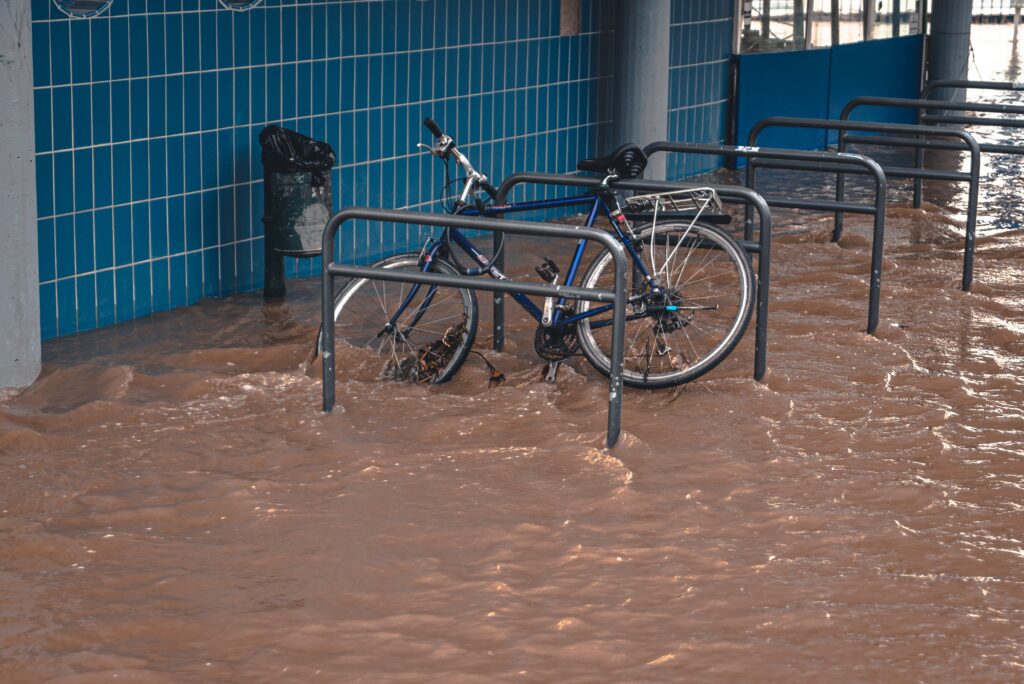New York City declared a state of emergency recently because of damage from the extraordinary flash floods, which destroyed streets, devastated property and completely upended mobility. Delivering over seven inches of rain in one day, the weather event was one of the most impactful disasters ever experienced by the city.
Data released this week by the National Center for Environmental Information outlined sobering statistics. The United States is experiencing more severe weather events than ever. During the 1990s, there was an average of 5.7 extreme weather events per year, causing over $1 billion in damage. However, in the last five years, the average has increased to 18.
Floods represent some of the most devastating severe weather events. Climate change has caused global temperatures to shift, and floods have become more intense than ever. The extent of the damage is more severe, which results in a longer and more extensive clean-up and rebuilding process. Recovery efforts result in high demand for all sorts of projects. Still, preempting weather disasters before they wreak havoc on a region also creates an exceptionally high demand for mitigation initiatives.
The Federal Emergency Management Agency (FEMA) is responsible for assisting recovery efforts after all types of disasters. A recent move signaled the importance of disaster recovery efforts as FEMA was listed as a priority in the stopgap spending measure passed by Congress.
Three flood mitigation project opportunities supported by FEMA funding are the Seaport Coastal Resilience Project in New York, the Atmospheric River Control Spillway Project in California, and the Bismarck Flood Mitigation Program. Each project has received $50 million in funding.
The Hooffs Run and Timber Branch culverts project has a projected total cost of $60 million. The project is currently being designed and construction is expected to begin in 2026. The work will focus on two long concrete culverts built to reduce the severity of persistent flooding in Alexandria, VA. The culverts, however, can no longer adequately filter enough water to provide flood protection. The project will reduce surface water flooding by redesigning 10 sites and widening the two main culverts. Builders will also add a new storm sewer system under Russell Road for additional flood drainage.

Photo by Mika Baumeister on Unsplash
New York City’s Seaport Coastal Resilience Project will be a massive undertaking costing approximately $110 million. Its objective will be to protect the vulnerable part of the southern waterfront of Manhattan from coastal storms and rising sea levels. The plan is to raise the esplanade by approximately five feet to prevent the area from being inundated by rising tides. To protect from the effects of heavy rain, drainage infrastructure in the area will also be upgraded. Although the project is currently in the design phase, construction could be delayed until 2026. FEMA will contribute $50 million in funding to support the project.
A $240 million project will create an additional spillway for the New Bullards Dam in Marysville, CA. The additional drainage capacity will be designed to mitigate flooding risks by releasing water from the dam before a storm hits. This will allow the basin to have the required capacity to retain the extra water flow. The dam’s gates will be 31.5 feet lower than the spillway gates and when completed, the project will allow them to release up to 35,000 cubic feet of water per second in advance of a threatening storm event. The New Bullards Bar Dam is situated above the area northeast of Marysville in Yuba County, home to about 100,000 people. Five major floods have impacted the area, and the mitigation project will reduce risks associated with future floods. FEMA will support this project with $50 million in grant funding.
The Harris County Flood Control District plans to build a stormwater detention basin, which will be known as the Boudreaux Stormwater Detention Basin. Project planners are considering three different design options with cost estimates ranging from $55.9 million to $78.9 million, depending on the size of the detention basin. Funding for a feasibility study, preliminary engineering and right-of-way acquisition has been approved. The design phase should begin soon, focusing on the best option to prevent excess water buildup in the Willow Creek watershed.
The Milwaukee Metropolitan Sewerage District has allocated millions for flood mitigation projects in 2024. One of many projects along the Menomonee River has received $56 million to protect 62 structures from the floodplain in the Western Milwaukee corridor. Other projects include the Menomonee River Watershed project, which directly impacts Milwaukee. The first project will begin in June of 2024. Infrastructure improvements include construction of a floodplain levee and floodwall along West State Street, connecting to the existing east end of the levee, as well as additional levees and floodwalls.
The city of Newport, OR., will replace two dams, known as the Big Creek Dams, for a total value of $60 million. The project is currently in the design phase. Each new structure will be a roller-compacted concrete dam, a type of structure that has a steep vertical slope. Both dams will measure 500 feet in width. Newport is vulnerable to earthquakes and if either of the existing dams should break because of seismic activity, it could result in flood damage significantly outweighing the cost of replacing the current dams as well as the potential loss of lives. Project engineers say the new dams will withstand a 2,500-year probabilistic seismic event because they will be designed with elasticity and fortified to absorb seismic waves. The dams will also have drainage galleries, a type of tunnel built into a dam to divert flowing water.
A $78 million flood prevention project near Bismark, North Dakota, has also received $50 million from FEMA. It will be designed to relieve more than 100 homes located in the 100-year flood plain. The project involves constructing a lift station near Solheim Elementary retention ponds adjacent to the airport and upgrading an existing flood control gate system. The new gate system will trap more water and the lift station will pump it out before it spills over. The project aims to enhance the conveyance of stormwater along major city streets. Other related projects include upgrading an existing detention pond, diverting interior drainage, and constructing the outlet of a second pond. These initiatives will help achieve the goal of improving stormwater management.
Additional funding sources will continue to be announced for mitigation projects related to future weather-related disasters.

As President and CEO of Strategic Partnerships, Inc., Mary Scott Nabers has decades of experience working in the public-private sector. A well-recognized expert in the P3 and government contracting fields, she is often asked to share her industry insights with top publications and through professional speaking engagements. Get an exclusive look at upcoming trends and insider tips from Mary herself on the SPI blog.
Tags: Alexandria, Atmospheric River Control Spillway Project, Big Creek Dams, Bismarck Flood Mitigation Program, Bismark, Boudreaux Stormwater Detention Basin, CA, Climate Change, Earthquake, FEMA, Flash Floods, flood mitigation projects, flood prevention project, floodplain levee, floodwall, funding sources, Harris County Flood Control District, Hooffs Run and Timber Branch culverts project, lift station, Manhattan, Mary Scott Nabers, Marysville, Menomonee River, Milwaukee Metropolitan Sewerage District, National Center for Environmental Information, New Bullards Dam, New York City, Newport, North Dakota, OR, rising sea levels, Seaport Coastal Resilience Project, severe weather events, SPI, state of emergency, stormwater management, Strategic Partnerships, VA, Willow Creek watershed






 RSS Feed
RSS Feed